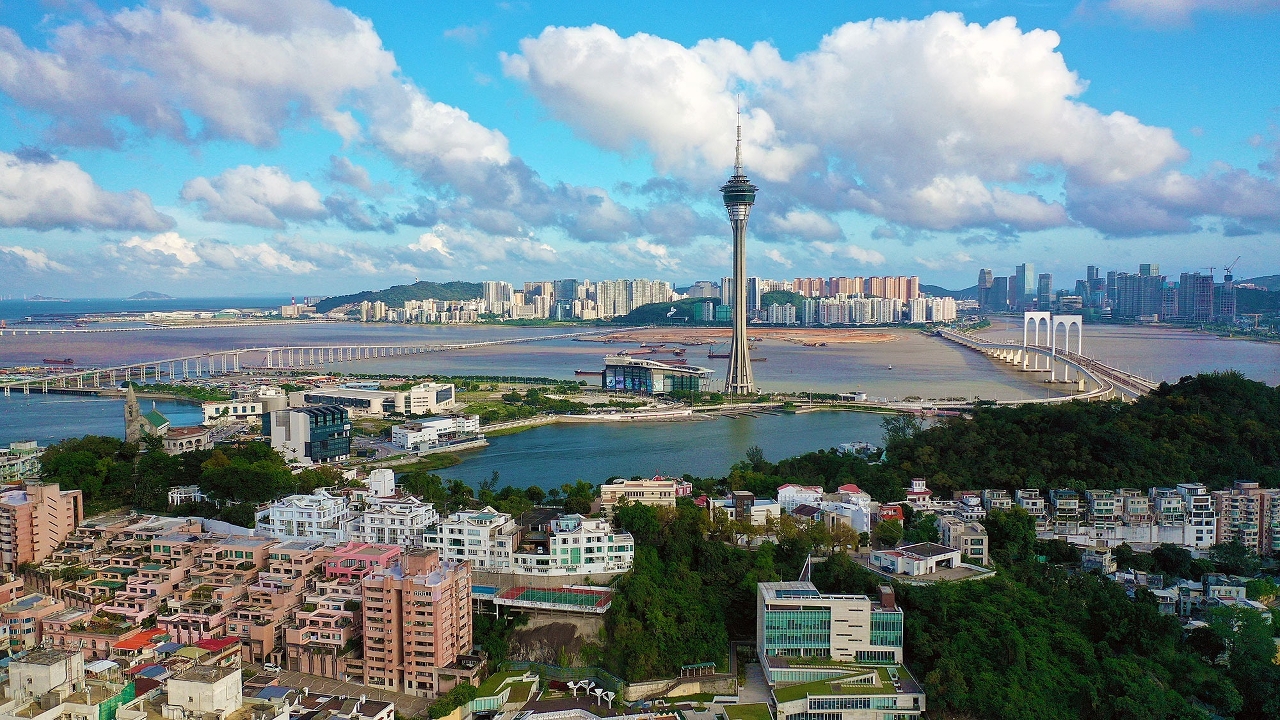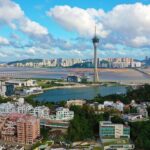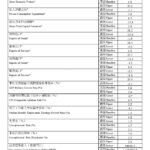 UM releases the revised macroeconomic forecast for Macao 2025
UM releases the revised macroeconomic forecast for Macao 2025
Based on the latest data released by the Macao SAR Government, the Centre for Macau Studies (CMS) and the Department of Economics of the University of Macau (UM) have revised the macroeconomic forecast for Macao 2025. The research team has adjusted Macao’s baseline GDP growth in 2025 downwards to 6.8%; while the baseline forecasts for other major economic variables are: exports of services will grow by 6.8%; private consumption expenditure will increase by 3.8%; the CPI inflation rate will be 0.7%; the overall unemployment rate will be 1.7%; the unemployment rate of Macao residents will be 2.3%; and the Macao SAR Government’s current revenue will be MOP 116.8 billion.
Visitor arrivals gradually recovered to normal levels in the post-pandemic period. The pace of recovery was still good in the first quarter of 2024, but began to slow in the second quarter. The total number of visitor arrivals in the fourth quarter was 9.01 million, an increase of only 8.7% on the previous year. Among them, the number of visitor arrivals from mainland China reached 6.27 million, up 10.4% year-on-year; the number of visitor arrivals from Hong Kong was 1.78 million, down 3.2% year-on-year; and the number of visitor arrivals from other regions was 0.96 million, up 24.9% year-on-year. In 2025, the total number of visitor arrivals in the first two months was 6.79 million, up 10.4% year-on-year. Among them, the number of visitor arrivals from mainland China was 5.04 million, up 11.9% year-on-year; the number of visitor arrivals from Hong Kong was 1.16 million, up 0.2% year-on-year; and the number of visitor arrivals from other regions was 0.59 million, up 20.1% year-on-year.
Due to the slowdown in the growth of visitor arrivals, real exports of services in the fourth quarter of 2024 were MOP 76.0 billion, an increase of 2.1% year-on-year. Among them, real gaming expenditure of non-residents was MOP 44.4 billion, an increase of 4.3% year-on-year; while real non-gaming expenditure of non-residents was MOP 22.0 billion, a decrease of 6.0% year-on-year. For the whole year of 2024, real exports of services were MOP 299.2 billion, an increase of 9.2% year-on-year, of which real gaming expenditure of non-residents was MOP 177.1 billion, an increase of 21.8% year-on-year; while real non-gaming expenditure of non-residents was MOP 87.1 billion, a decrease of 6.1% year-on-year.
In terms of domestic demand, both private consumption and investment were stable. In terms of private consumption, real private consumption expenditure in the fourth quarter of 2024 amounted to MOP 30 billion, an increase of 2.9% year-on-year. Among them, the growth of real consumption expenditure abroad showed a promising increase of 4.7% year-on-year; while the real consumption expenditure on consumer goods was weaker, decreasing by 3.0% year-on-year. For the whole year of 2024, real private consumption expenditure was MOP 116.9 billion, up 4.9% year-on-year. In terms of investment, gross fixed capital formation in the fourth quarter of 2024 was MOP 14.9 billion, down 0.2% year-on-year; while gross fixed capital formation for the whole year of 2024 was MOP 56.5 billion, up 4.6% year-on-year.
Overall, Macao’s GDP grew rapidly in the first quarter of 2024, rising by 23.0% year-on-year. The pace of growth then gradually slowed in the following quarters, with growth of 7.1% in the second quarter, 3.8% in the third quarter, and only 3.4% in the fourth quarter. For the year as a whole, Macao’s GDP grew by 8.8%.
Prices remained stable, with a CPI inflation rate of only 0.7% in 2024. Food and non-alcoholic beverages, the largest component, had an inflation rate of 1.1%; while housing and fuel, the second largest component, had an inflation rate of 0.5%. In the first two months of 2025, the overall inflation rate was 0.2%, with food and non-alcoholic beverages at 0.8%, and housing and fuel at 0.3%.
The labour market remains tight, with the unemployment rate held at a low level. From the second to the fourth quarter of 2024, the overall unemployment rate was 1.7%, while the unemployment rate of Macao residents was 2.3%. Employment earnings saw an increase. The overall median monthly employment earnings reached MOP 18,000 in the fourth quarter of 2024, which was higher than MOP 17,600 in the same period in 2023. The median monthly employment earnings of Macao residents was MOP 20,500, which was also higher than MOP 20,000 in the same period in 2023.
Since taking office in mid-January this year, the Trump administration has implemented a number of tariffs and trade protection measures, leading to volatility in global trade. This has also created potential inflationary pressures in the US, making it difficult to lower interest rates, which has had a negative impact on global economic growth. The US government’s tariff measures target countries around the world, but many of its trade policies target China. In addition, mainland China is experiencing a slowdown in growth due to structural adjustments, and how it responds to this will have a significant bearing on its economic growth in the near future. Mainland China is the main market for Macao’s exports of services and its economy will have a direct impact on Macao’s economic growth. As various unstable factors continue to affect Macao’s economic growth, the research team has revised the baseline forecasts for major economic variables for 2025:
- Macao’s GDP will grow by 6.8%.
- Exports of services will grow by 6.8%.
- Private consumption expenditure will increase by 3.8%.
- Gross fixed capital formation will increase by 2.9%.
- The inflation rate (measured by the GDP deflator) will be 0.2%, and the CPI inflation rate will be 0.7%.
- Median monthly employment earnings will increase by 1.5%.
- The unemployment rate will be 1.7%, and the unemployment rate of Macao residents will be 2.3%.
- The Macao SAR Government’s current revenue will be MOP 116.8 billion.
About the Macroeconometric Structural Model of Macao
The Macroeconometric Structural Model of Macao is a quarterly simultaneous-equations econometric model which covers seven blocks of Macao’s economy: consumption, investment, external trade, prices, government, labour market, and monetary sector. It includes 87 equations and 304 variables. Time series data start from the first quarter of 1998 and is updated once new data are available. Its results provide the community with a timely understanding of the state of Macao’s economy and support prudent decision-making. The model was founded by the late Prof Sir James Mirrlees, winner of the Nobel Memorial Prize in Economic Sciences and honorary doctor of social sciences of the University of Macau (UM), and faculty members in the Department of Economics of UM. The research team is led by Kwan Fung, with members including Chan Chi Shing, Ho Wai Hong, and Gary Wong Ka Kei. The project is currently managed by the Centre for Macau Studies of UM.



